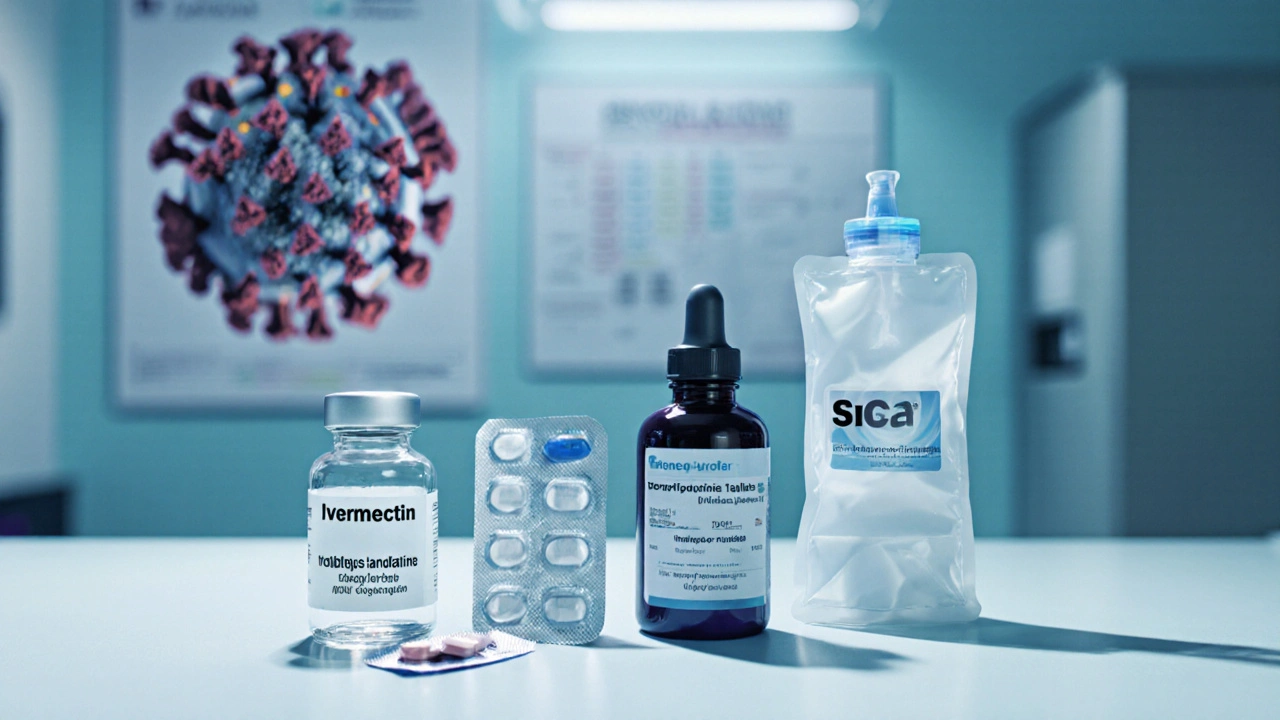Ivermectin vs Alternatives: A Practical Comparison
A detailed, evidence‑based comparison of Ivermectin and its main alternatives, covering efficacy, safety, guidelines and practical decision‑making for clinicians.
When working with Ivermectin, a broad‑spectrum antiparasitic medication originally developed for veterinary use. Also known as Stromectol, it has become a staple in global health programs for eliminating parasite‑related diseases.
If you’re searching for reliable information on Ivermectin, start with its core function: it belongs to the Antiparasitic, a class of drugs that kill or inhibit parasites that affect both humans and animals. The drug works by binding to glutamate‑gated chloride channels in the parasite’s nerve and muscle cells, causing paralysis and death. This mechanism makes it highly effective against a range of nematodes, including those that cause river blindness.
The most celebrated application is against Onchocerciasis, also called river blindness, a parasitic disease caused by Onchocerca volvulus. Mass drug administration programs in sub‑Saharan Africa have used a single yearly dose of Ivermectin to dramatically reduce infection rates and prevent vision loss. The same drug also treats strongyloidiasis, scabies, and certain lice infestations, showing its versatility across different parasite types.
Proper dosing is crucial for safety and effectiveness. For most adult indications, a single oral dose of 150–200 µg/kg is recommended, with repeat dosing only when prescribed. Lower doses are used for children or patients with liver impairment. The drug’s half‑life is about 18 hours, but its metabolites can linger longer, which is why timing with food and other medications matters.
Speaking of other medications, be aware of potential Drug interaction, the way one medication can affect the action of another. Ivermectin can enhance the effects of certain anticoagulants and may increase neurotoxic risk when combined with other agents that affect the GABA pathway. Always tell your doctor about any supplements or prescriptions you’re taking before starting treatment.
In recent years, Ivermectin found its way into the COVID-19, the respiratory illness caused by the SARS‑CoV‑2 virus debate. Early laboratory studies suggested it might inhibit viral replication, sparking off‑label use worldwide. However, large‑scale clinical trials have failed to show a clear benefit, and health agencies now advise against its routine use for COVID‑19 outside controlled studies. The controversy illustrates how quickly misinformation can spread when a drug crosses from proven indications into unverified territory.
Beyond human medicine, the drug’s origins in veterinary practice remain important. Livestock farmers rely on Ivermectin to control internal and external parasites, improving animal health and productivity. Human dosages are lower than many veterinary formulations, and the safety profile differs because of species‑specific metabolism. Understanding this background helps explain why the drug is widely available yet strictly regulated for human use.
For patients looking to obtain Ivermectin, the safest route is through a licensed pharmacy with a valid prescription. Confirm the pharmacy’s credentials, read the medication guide, and never purchase from unverified online sources. By following proper dosing, monitoring for interactions, and staying updated on the latest research, you can use Ivermectin responsibly and effectively.
Below you’ll find a curated collection of articles that dive deeper into Ivermectin’s clinical use, safety considerations, comparison with other antiparasitics, and the latest findings from ongoing studies. Whether you’re a patient, a caregiver, or a health professional, these posts will give you practical insights to make informed decisions.

A detailed, evidence‑based comparison of Ivermectin and its main alternatives, covering efficacy, safety, guidelines and practical decision‑making for clinicians.